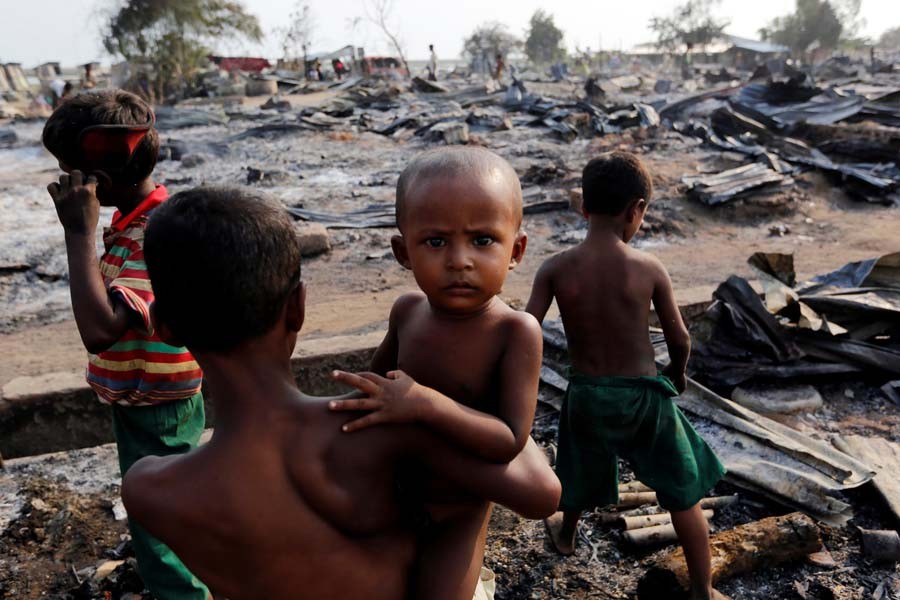Myanmar government is bulldozing over the site of a Rohingya mass grave in an effort to destroy evidence of a massacre committed last year by the military, according to a rights monitoring group, according to The Guardian.
The claim follows investigations conducted by the Associated Press and Reuters news agencies, which revealed evidence of other mass graves.
The Arakan Project, which uses on-the-ground networks to document abuses against the Rohingya community in western Rakhine state, Myanmar, provided the Guardian with a video of the grave site before its destruction. The footage shows half-buried tarpaulin bags in a forest clearing, with a decaying leg visibly protruding from one of the bags.
Chris Lewa, director of the Arakan Project, said the bulldozing appears to be part of an effort to hide evidence of the grave permanently following the exposés that appeared in the press.
“Two of the mass graves sites we know about have appeared in the media, but on Thursday one of the other mass grave sites was bulldozed. This means that evidence of the killings is being destroyed,” she said.
“Private companies are doing the bulldozing. They come from central Myanmar, not Rakhine,” she said. “It’s clear this is happening under the orders of government.”
The reported site of the mass grave, in Maung Nu, Buthidaung township, in northern Rakhine state, was the location of a massacre that rights groups report took place in August last year. Human Rights Watch said survivors had told them the army had “beaten, sexually assaulted, stabbed, and shot villagers who had gathered for safety in a residential compound” in the village. Dozens were said to have been killed. Satellite imagery obtained by Human Rights Watch showed that Maung Nu had been razed in the aftermath.
The Rohingya are a largely stateless Muslim minority primarily located in Rakhine. Rights organisations say they have suffered decades of systematic persecution and three “ethnic cleansing” campaigns since 2012, a charge the government denies. The group are not recognised by the government as a native minority of Myanmar and are often referred to as “Bengalis” in official discourse, a term implying that they are foreigners.
Thousands of Rohingya are estimated to have been killed during a military crackdown which began in August 2017, following an attack on security outposts by an insurgent group known as the Arakan Rohingya Salvation Army (Arsa). Nearly 700,000 Rohingya fled to nearby Bangladesh during the violence.
Last week, Yanghee Lee, the UN special rapporteur for human rights in Myanmar, said the crisis had the “hallmarks of genocide”.
The government of Myanmar has denied claims that the military conducted ethnic cleansing against the Rohingya. An army investigation into its own conduct during the 2017 crackdown exonerated itself of any blame. However, in a surprise move last month, the military admitted that Rohingya found in a mass grave at the village of Inn Din had been killed by its soldiers.
A UN fact-finding mission has been denied access to Myanmar while the UN’s special rapporteur on human rights has been barred from entering the country.
“We’ve heard about the allegations of the destruction at Maung Nu and we’re concerned that this could be part of broader efforts to conceal the atrocities committed by Burmese security forces,” Phil Robertson, Human Rights Watch’s deputy Asia director, told The Guardian.


